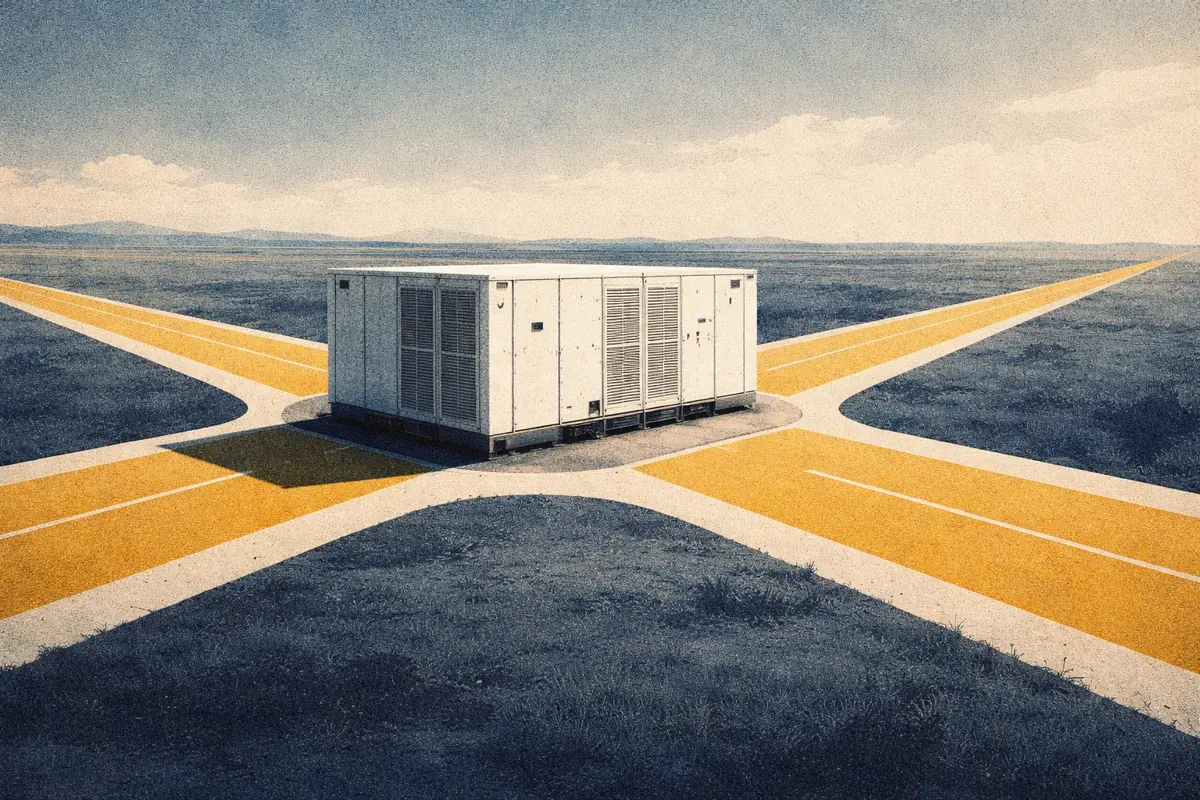Enduring Auction Capability: bidding strategies for frequency response
Enduring Auction Capability: bidding strategies for frequency response
The Enduring Auction Capability (EAC) will be launched in October 2023. This is National Grid ESO’s new, in-house platform for procuring frequency response and reserve services. The EAC will change how the frequency response market works and how providers bid for these services.
The ESO has just released the final proposed service design for the EAC following a consultation earlier in the summer (find the details here). Awaiting Ofgem approval, this confirms how the new market will function.

Want to get up to speed with the new terminology used in the Enduring Auction Capability? Read our bidding explainer here.
The new rules bring a lot of new options to bidding. So, what are the different strategies that providers may use to bid for frequency response when the EAC launches?
Replicating today’s bidding strategies in the EAC is possible but not always simple
Current bidding strategies for frequency response are based on different uses of parent, child, and looped bids (explained in more detail here). But how will providers convert these strategies for use in the Enduring Auction Capability?
“Looped bids” are much simpler in the EAC
Today, providers must submit two looped bids (C88) to connect bids for both high and low delivery. This can be done in the EAC with a single parent order, with volume in both directions. Only a single price is included, which applies to the total volume of the order.
Strategy 1: A bid for Dynamic Containment Low and Dynamic Containment High, which can only be accepted together.

Bids such as these which connect different services are expected to retain their advantage in being accepted, discussed in our deep dive on the topic last week.
A simple parent order strategy becomes more complicated
Today, separate all-or-nothing bids for high and low delivery can be provided using two parent (C01) bids. In the EAC, this requires parent orders in three different baskets. One basket contains a bid for Dynamic Containment Low, one for Dynamic Containment High, and one for both. The price in the final basket will be the weighted average price of the two other baskets.
As these baskets are for the same EFA block, they are mutually exclusive, and only one basket can be accepted.
Strategy 2: A non-curtailable bid for Dynamic Containment Low and Dynamic Containment High, either of which can be accepted.

What is a simple bidding strategy today becomes more difficult in the EAC. Pursuing this bidding strategy for a whole day will use 18 of the 25 available baskets while providing bids for just one of the three frequency response services.
Child orders can still be used to split bid volumes with a separate price
In today’s auctions, child orders are submitted alongside parent orders to split out volume at a separate, often higher price. It is this that provides the potential for ‘hockey-sticking’ bids.
This functionality is the same within the EAC for child orders, but now, more than one child order can be provided. As with the current market design, a child order can only be accepted if the parent order is accepted.
Strategy 3: Strategy 2 but with a portion of volume included at a higher price via child orders.

Child orders are curtailable, so this additional volume may be partially accepted. When child orders are curtailed across multiple services, the accepted volume of each service must remain in the same proportions as what was submitted.
The Enduring Auction Capability will offer participants much more freedom in bidding strategy
The main difference between the current market design and the EAC is that participants can submit orders for multiple frequency response services simultaneously.
With different combinations of parent, child, and substitutable child orders, providers will have much more flexibility in bidding.
Participants can bid for multiple frequency response services and let the auction decide what is taken
Providers can only submit bids for one service at a time today. Auctions for the three frequency response services are separate, and providers must decide which service they want to bid for ahead of time.
In the EAC, multiple services can be bid into simultaneously. This can be achieved by using a separate basket for each service. As baskets in the same EFA block are mutually exclusive, only one will be accepted. The auction algorithm will select the option that clears the market at the best price. This is called “co-optimization” and is new to the EAC.
Strategy 4: Bids across all three frequency response services, with a bid for only one service to be accepted.

Child orders can be added to these baskets to provide volume at different prices (see Strategy 3).
Providers can now split the delivery of frequency response between multiple services
The EAC will introduce “splitting” - the ability to deliver the different frequency response services alongside one another. This is not possible in today’s market design.
Whilst a provider can offer split delivery using a single parent order, the best results will likely come from using either child or substitutable child orders.
Parent orders can be set to zero volume, which gives new flexibility to bidding
Child orders can be combined with a zero MW parent order (new in the EAC) to provide a fully curtailable bid for the three dynamic frequency response services.
Separating each service into its own child block means it can be accepted or rejected independently of the other child orders in the basket. This maximizes the chance of being accepted within at least one service.
Strategy 5: A bid for a combination of Dynamic Containment, Dynamic Moderation, and Dynamic Regulation.

The volume included within each child order cannot exceed what the unit is qualified to deliver. The volumes across child orders cannot exceed the unit's total capacity.
Substitutable child orders are new to the EAC and may provide the best route to co-optimization
Swapping the child orders in Strategy 5 for the new substitutable child order will likely provide the best route to maximizing the chance of winning a contract in any of the three services.
Substitutable child orders are accepted in relation to each other. Providers can submit their full delivery capability for each service, with ESO accepting the combination that best suits their needs without exceeding what the unit can deliver.
This means if the ESO only wants to accept a bid for one service, it can do this at the full capability the unit can provide.
Strategy 6: A bid for any combination of Dynamic Containment, Dynamic Moderation, and Dynamic Regulation with certain limits.

Baskets can be connected over multiple EFA blocks
Frequency response baskets in the EAC must be for a single EFA block. However, baskets can be connected across multiple service windows via looping. This results in a “looped family”.
If each basket consists of parent orders at a volume greater than 0, these parent orders must be accepted together.
Strategy 7: A bid for Dynamic Containment for an entire day.

Because each basket contains just one parent order, the combination of the six baskets must be accepted together. Otherwise, the bid will be rejected.
The Enduring Auction Capability provides more choices for bidding, but with limitations
Strategy 2 shows that some bidding strategies that are simple today become more complex within the Enduring Auction Capability. The limit on the number of baskets each unit can submit means that providers cannot leave everything up to the auction’s co-optimization algorithm.
Providers wanting to submit a co-optimizable bid may have to move away from their preferred bidding strategy for a single service. Many providers may think they are better suited to decide which service(s) they want to participate in on any given day.
The best strategies are likely only to reveal themselves with time
As we see today, providers will find new and innovative bidding methods to maximize the value their assets can earn. The use of looped bids took a year to pick up momentum and is now extremely popular. It remains to be seen whether co-optimization and splitting are to become common strategies for batteries.
The complexity of the new platform also means things will likely take a while for providers to settle on preferred bidding strategies. Providers can submit up to six bid orders per EFA block in today's auction or 36 for an entire day. In the EAC, providers can submit up to 525 orders daily (25 baskets each with one parent order, and up to ten child orders, and up to ten substitutable child orders!), with over 3,000 combinations of different bid orders.
This will all make bidding automation even more important, while determining what has caused certain market outcomes will become even more difficult than it is today.







